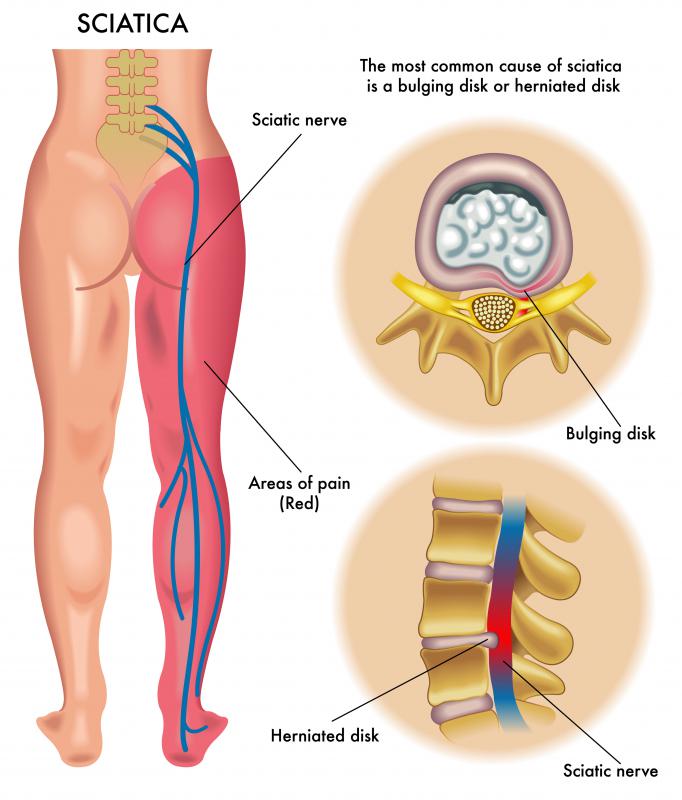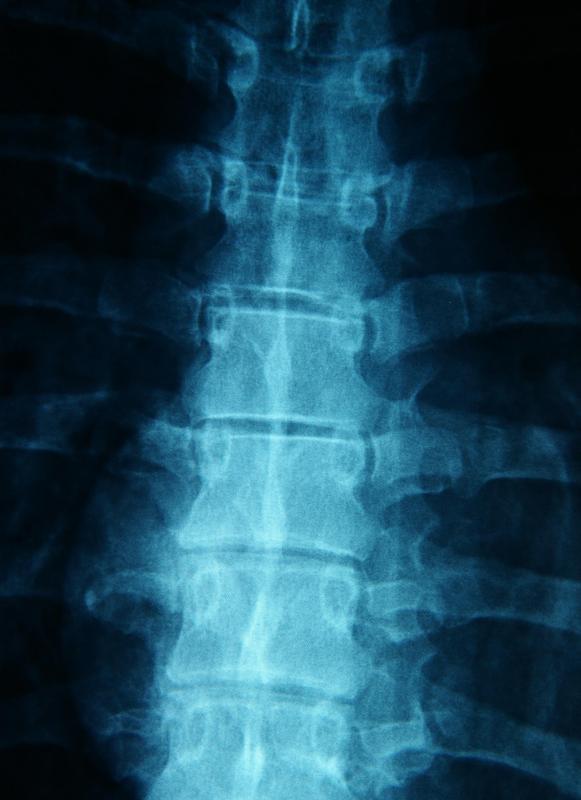At TheHealthBoard, we're committed to delivering accurate, trustworthy information. Our expert-authored content is rigorously fact-checked and sourced from credible authorities. Discover how we uphold the highest standards in providing you with reliable knowledge.
What is Chronic Sciatica?
Chronic sciatica refers to constant or frequently recurring pain in one of the legs. The problem is caused by compression or structural damage to the sciatic nerve, the long nerve that originates at the base of the spine and travels in branches to each foot. Chronic sciatica is usually caused by a problem in the spine, such as a herniated disk, degenerative disk disorder, or a congenital defect. Occasionally, major trauma to the leg or buttock or a large tumor near the spinal cord can also cause nerve damage. Treatment decisions are made based on the cause and severity of symptoms, and most cases can eventually be relieved when medical care is sought.
The symptoms of chronic sciatica can vary. Many people have constant, radiating pain that runs from their lower backs through one side of their buttocks and down one of their legs. Tingling, numbness, and muscle weakness are common sensations, and they may be felt throughout the leg or in particular places along the sciatic nerve. For most people, chronic sciatica is only slightly uncomfortable and they can still manage daily activities, such as walking and driving. Some individuals, however, experience debilitating pain and weakness that significantly limits their activity level and quality of life.

A doctor can usually make a very basic diagnosis of chronic sciatica during a physical exam. The physician can ask about symptoms, test reflexes and feel around on the leg and buttock to find tender places. In order to discover the underlying cause, the doctor may order x-rays and magnetic resonance imaging scans of the lower spine to look for signs of slipped and worn disks. Treatment for chronic sciatica is targeted at correcting the major causes of nerve pain.

If no major damage is discovered during diagnostic tests, the doctor may simply suggest self-care techniques to relieve pain. A patient can try alternating between cold and hot packs to reduce inflammation and ease muscle soreness. Over-the-counter painkillers and anti-inflammatory drugs can be helpful as well. Regular low-impact exercise in the form of yoga, careful stretching, and walking help many people find relief. Finally, it is important to try to maintain good posture when sitting and standing to take pressure off of the sciatic nerve.

More aggressive treatment may be necessary if a spine problem is discovered. A patient may need to receive an injection of anti-inflammatory and analgesic medication in his or her lower spine to temporarily reduce painful sensations. Surgery is needed in most cases of slipped disks to realign the spine, decompress the sciatic nerve, and reinforce the backbone so the problem is less likely to return. Several months of rest followed by regular physical therapy sessions may be necessary to regain flexibility in the back and legs after surgery.
AS FEATURED ON:
AS FEATURED ON:
















Discuss this Article
Post your comments